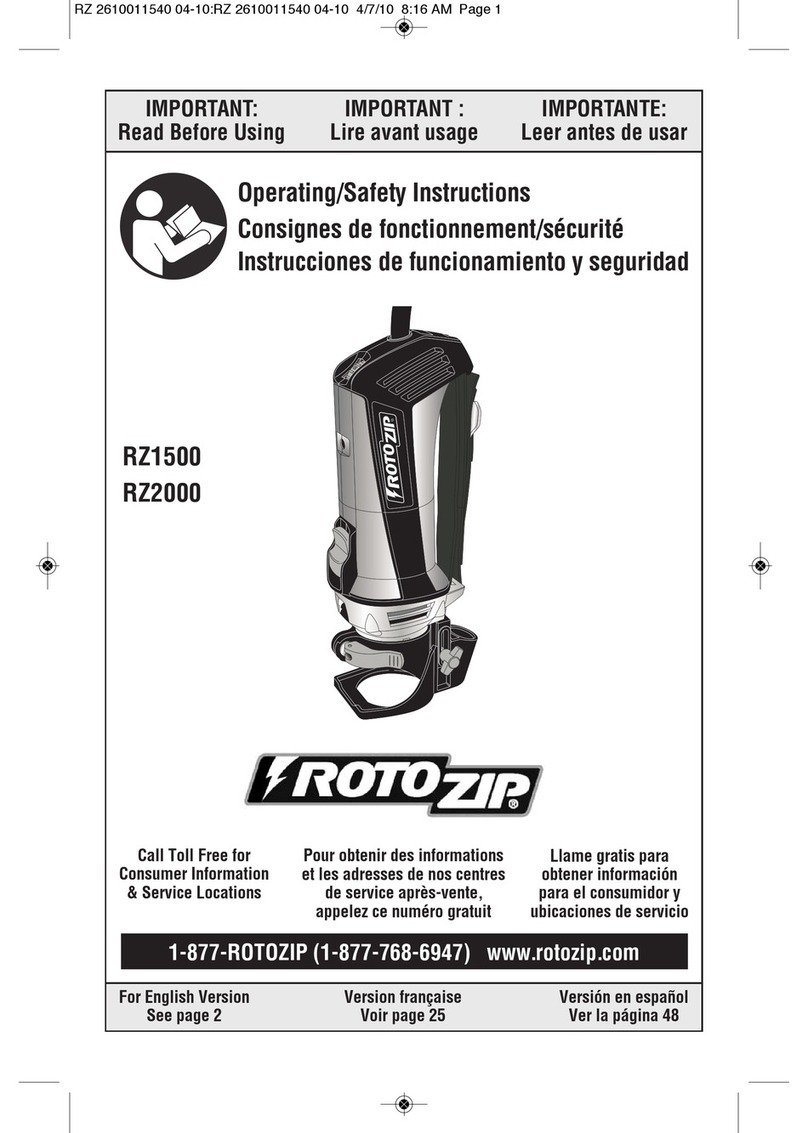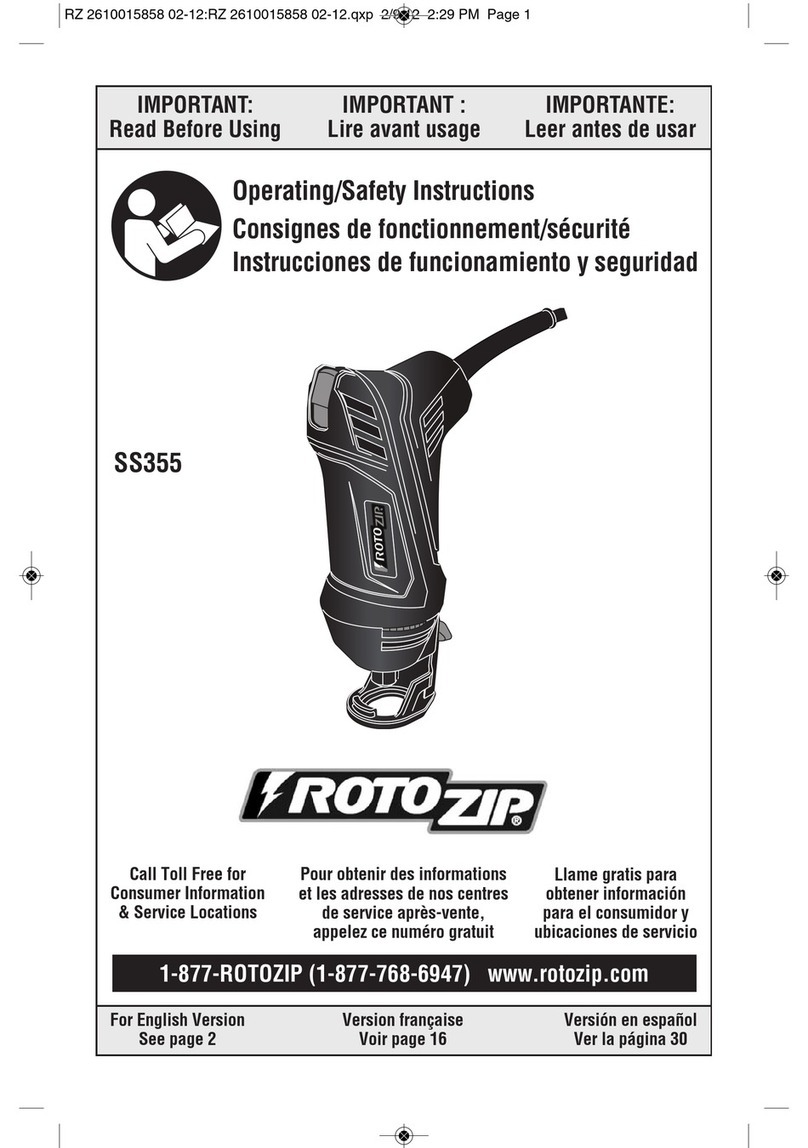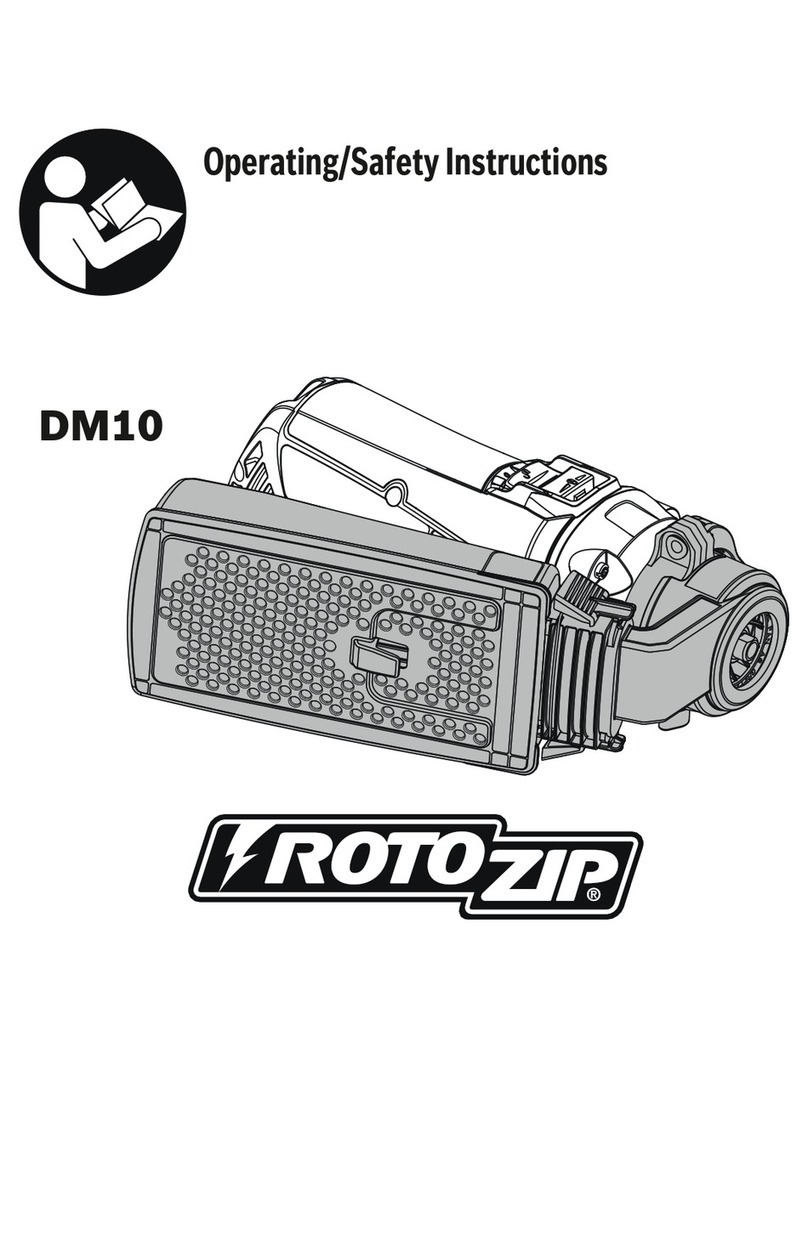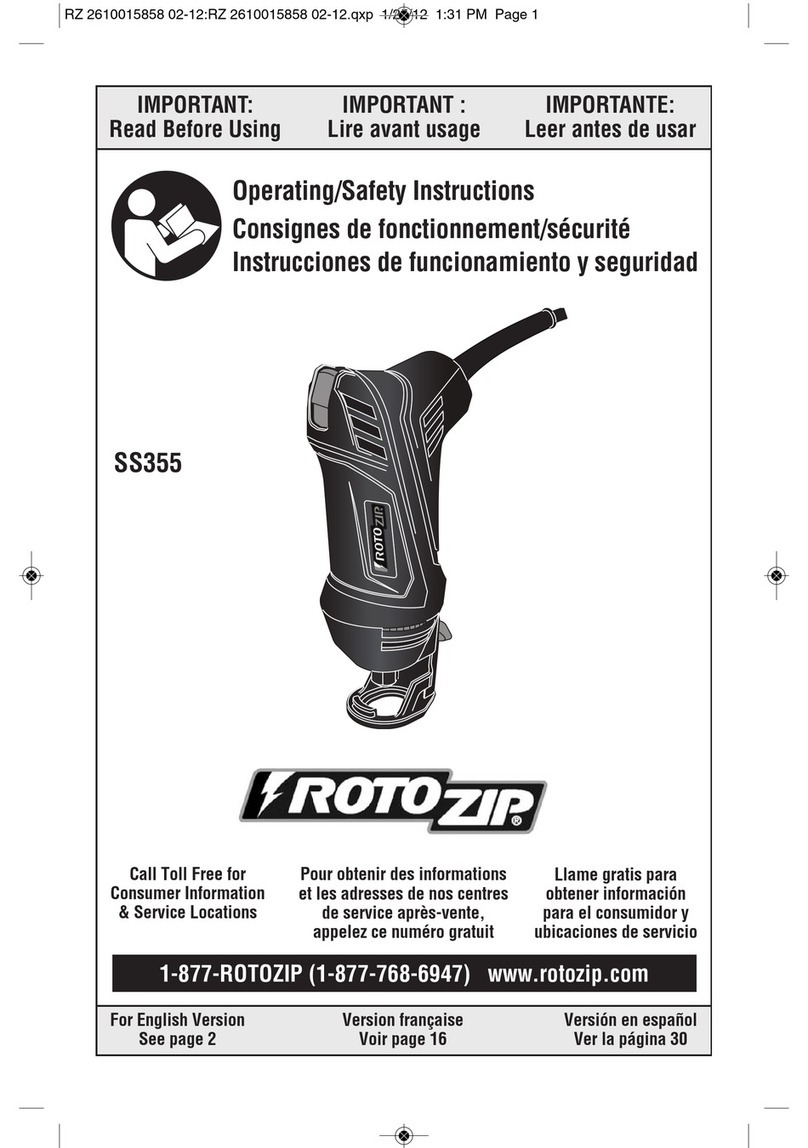-5-
Hold tool by insulated gripping surfaces
when performing an operation where the
abrasive wheels may contact hidden
wiring or its own cord. Contact with a “live”
wire will make exposed metal parts of the
tool “live” and shock the operator.
Wear proper apparel while using an
abrasive cut off tool. Face shield or at least
safety goggles, dust mask, leather gloves
and shop apron capable of stopping small
wheel or workpiece fragments.
This attachment is not intended to be
used with Wet Diamond Wheels. Using
water or other liquid coolants with this tool
may result in electrocution or shock. Use of
Dry Diamond Wheels is acceptable.
Use only Type 1 abrasive cut off wheels
with the correct size arbor hole. Never
use damaged or incorrect wheel flanges
or round nut. Other types of wheels are not
intended to apply load on periphery and may
shatter. Wheels with arbor holes that do not
match the mounting hardware of the tool will
run eccentrically, vibrate excessively and will
cause loss of control.
Do not grind on the side of Type 1
abrasive cut off wheels. Side forces applied
to these wheels may cause them to shatter.
Do not use this attachment with
“Woodcarving” blade or standard wood
cutting toothed blades. These blades are
not intended for this tool and can create loss
of control during use.
Abrasive Cut Off Wheels must have a
maximum safe operating speed greater
than the “no load RPM” marked on the
attachment. Wheels running over the rated
speed can fly apart and cause injury.
Before each use inspect the cut off wheel
for chips and cracks. Do not use a wheel
that may be damaged. Install a new wheel
if tool was dropped. When installing a
new wheel carefully handle individual cut
off wheels to avoid chipping or cracking.
Run the tool at no load for one minute,
holding the tool in the direction away
from people. Wheels with flaws will
normally break apart during this time.
Fragments from a wheel that bursts during
operation will fly away at great velocity
possibly striking you or bystanders.
Do not use a cut off wheel that is larger
than the maximum recommended size for
your tool, or worn down damaged wheels
from larger abrasive cut off tools. Wheels
intended for larger tools are not suitable for
the higher speed of a smaller tool, these
wheels may easily burst and the fragments
strike you or bystanders.
Position the cord clear of the spinning
wheel. Do not wrap the cord around your
arm or wrist. If you lose control and have
the cord wrapped around your arm or wrist, it
may entrap you and cause injury.
Keep your body positioned to either side
of the wheel, but not in line with the
wheel. It is important to support the tool
properly and to position your body such as to
minimize body exposure from the possible
wheel binding and the recoil of the tool.
Keep hands away from cutting area and
wheel. Keep your second hand on
auxiliary handle or the attachment. Hold
the tool firmly to prevent loss of control.
NEVER place your hand behind the wheel
since the tool may recoil over your hand.
Do not attempt to remove cut material
when wheel is moving. If both hands are
holding the tool, they cannot be cut by the
wheel
Do not “jam” the abrasive wheel into the
work, apply excessive pressure or
attempt to use large depths of cut while
using this tool. Let the rotating wheel do the
work, Abrasive Cut Off Tools are intended to
“cut” the material in a series of shallow depth
of cuts. See the instructions for depth of cut
later in this manual.
Avoid bouncing and snagging the wheel,
especially when working corners, sharp
edges etc. This can cause loss of control
and tool’s recoil.
Do not run the tool while carrying it at
your side. Accidental contact with the
spinning wheel could result in serious
personal injury.
Never lay the tool down until the motor
has come to a complete standstill. The
spinning wheel can grab the surface and pull
the tool out of your control.
Do not use the Zipmate near flammable
materials. Sparks from the wheel could
ignite these materials.
Never cut or attempt to cut magnesium
with this attachment. The dust generated
when cutting magnesium is highly flammable
and may be explosive under certain
conditions.
RZ 2610954840 07-07 8/16/07 3:55 PM Page 5



































